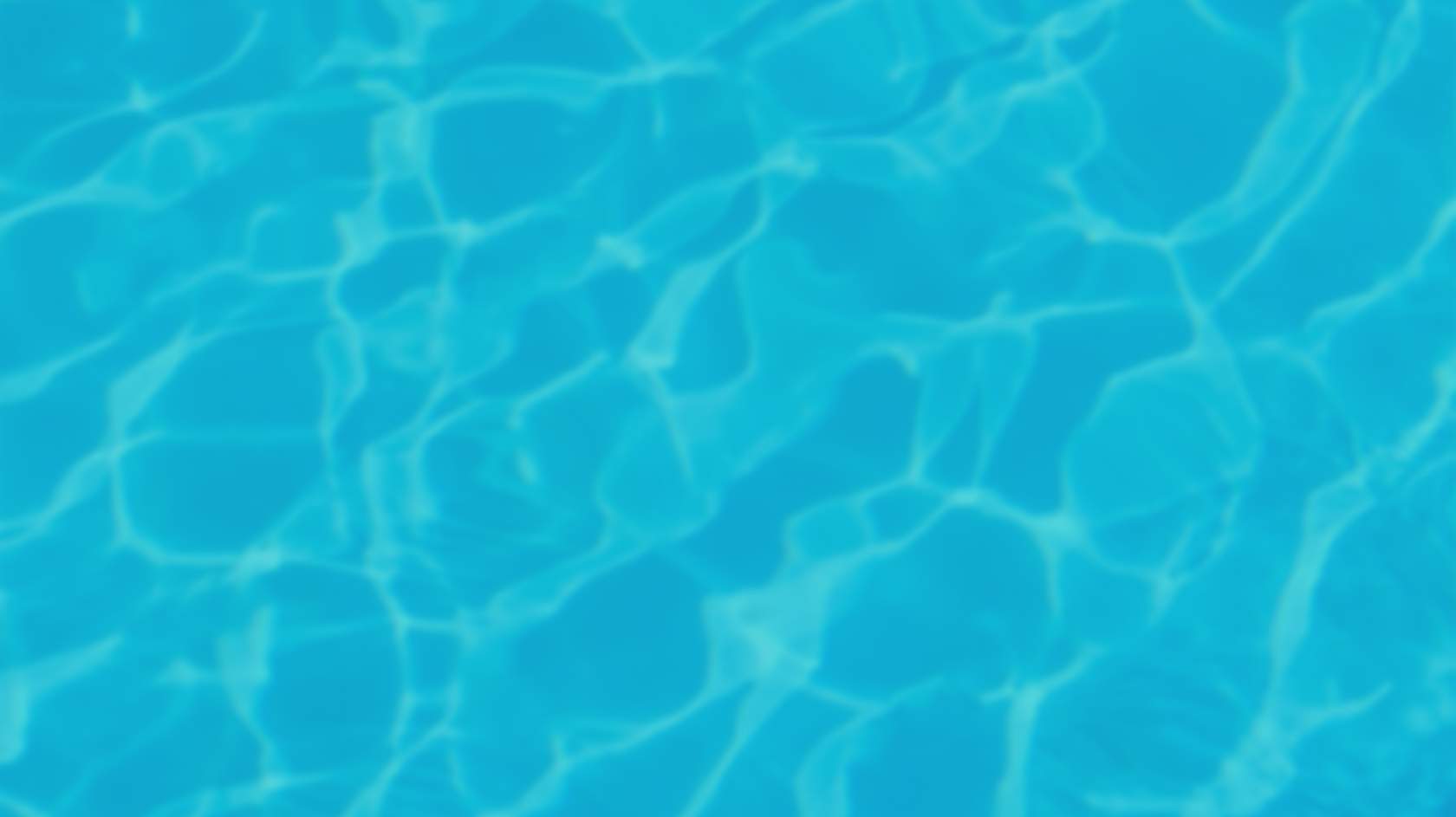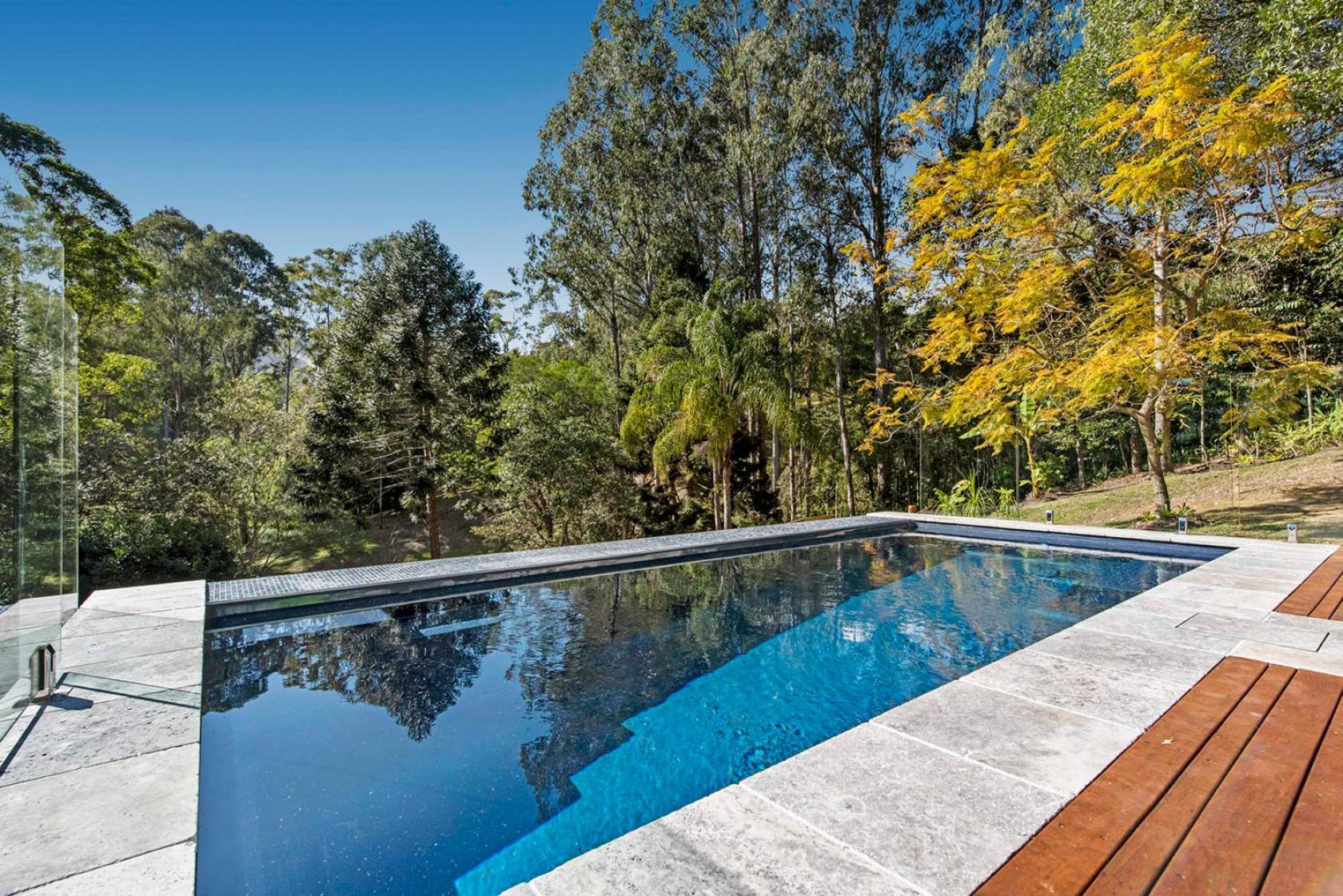

- Home >
- Caring for your Pool & Spa >
- Maintenance Schedules > Cloudy Pool
How To Clean Cloudy Pool
Get your pool water clear and sparkling
If your pool water is cloudy, there are several things that could be wrong. It is important to look for the cause before treating cloudy water. If you don’t find the cause, the pool will go cloudy again in a few days and you will have wasted your time.
Check your filtration and circulation system
Is the filter working properly? If the flow isn’t strong enough to push your hand away, you may be having problems with your filter and service may be required.
Does the filter need to be backwashed?
Are there any blockages or a build-up of debris?
Has the filter been chemically cleaned recently?
Is there enough sand or DE (Diatomaceous Earth) in the filter?
Ensure your filter is running for up to 12 hours a day depending on the season.
Check the chlorine level
The free chlorine level in the pool should be maintained between 1.0 and 3.0ppm. There are products available that assist your sanitiser by preventing bacteria and algae while removing organic waste build-up, which will help maintain the free chlorine level and reduce incidences of cloudy water. Check if chloramines are present, that is can you smell a very strong chlorine smell?
Check the pH and Total Alkalinity (TA)
The pH needs to be within the range of 7.2 and 7.6 and the TA between 80 and 120ppm. If the water is out of these ranges, it can cause cloudiness and build-up of scale. Your local SPASA pool shop can test all of these elements and make recommendations on how to keep these in balance.
Check for algae
Algae infestation, even in its early stages, can cause cloudy water. Ensure you add a preventative dose of algaecide every week. Algae may not always be visible, you may notice it because stairs, walls or fixtures are sticky or slimy. If the pool is cloudy because of an algae infestation, you will need to undertake a full algae treatment<Link to green pools page>.
Treatments for cloudy pools
After ruling out the above causes, the following treatments can be administered.
Adjust pH to 7.2 to 7.6
Add a dose of clarifier and run pump until water is clear - this may take 24 hours for a small cartridge filter on an above ground pool. You must run the pump because a clarifier glues particles together so they are big enough for the filter to remove. If you turn off the pump, the particles will fall to the floor and not go into the filter.
You can swim 2 hours after adding chemicals to the pool.
Adjust pH to 7.2 to 7.6
Add a dose of heavy-duty clarifier and run pump until clear - this may be 72 hours for an above ground pool with a small cartridge filter
You cannot swim until the water is clear. You may not be able to see if anyone is at the bottom of the pool
For a sand filter:
Adjust pH to 7.6 to 7.8
fill pool to the brim with water
turn off the pump
turn multiport valve to re-circulate or bypass
turn on the pump
for a 40,000 to 60,000 litre pool, add 1 litre Liquid Floc
run pump for 2 hours
turn off pump
leave to settle overnight
you can also use granular Alum Floc for this, but for every 2 kg you will need to add 4 kg of Buffer, to get the pH right
the pool water should now be clear with a layer of sediment on the bottom
if not, re-adjust pH to 7.6 to 7.8 and repeat
if the water is still not clear, visit your local SPASA pool shop for advice
turn off pump
turn multiport valve to waste
turn on the pump and connect up the pool vacuum (you cannot use a pool cleaner for this) and vacuum sediment to waste
watch the pool water level, stop if it reaches the bottom of the weir door and add more water
when finished, turn off the pump and turn valve to rinse
turn the pump on, run for one minute and turn off
turn valve to filter and turn on the pump
take a water sample to your pool shop to re-balance the water and test phosphate level
add phosphate remover as needed
swimming can resume after the water is balanced
For a cartridge filter, with a waste line:
Adjust pH to 7.6 to 7.8
take out the filter cartridge and continue as per the steps for a sand filter - you may ruin the cartridge if you run filter floc through it
For a cartridge filter, without a waste line:
most cartridge filters do not have a waste line, therefore flocking the pool is not an option
adjust pH to 7.2 to 7.6
add a dose of filter aid to the filter to speed the process
add a dose of strong clarifier to the water, every day until it is clear
run pump continuously
monitor the pressure gauge and clean the filter when necessary
it may take 3 or 4 days to clear an above ground pool with a small cartridge filter
take a water sample to your pool shop to re-balance the water and test phosphate level
add phosphate remover as needed
swimming can resume after the water is balanced
Cloudy water can also be a sign that superchlorination is needed
If there is an excessive presence of chloramines, the pool will have a strong smell of chlorine and the water will make eyes sore and/or skin itchy when you get out of the pool. These are all signs that the water may need to be superchlorinated. Another sign is when pool water is hazy after a days’ swimming – caused by a buildup of skin proteins, or high bather load.
Add a three times daily dose of Chlorine. Liquid is easiest, 5 litres in a 50,000 litre pool, but use granular if Liquid is not available (360 grams of Calcium Hypochlorite)
Adjust pH to 7.2 with acid; the extra Chlorine added will raise the pH, especially Liquid.
Leave the salt chlorinator running as normal
Swimming needs to be stopped for 2 hours after adding any chemicals
